Pebble dash kings are rockin'
in Leesburg, Virginia
Here's how we did it:
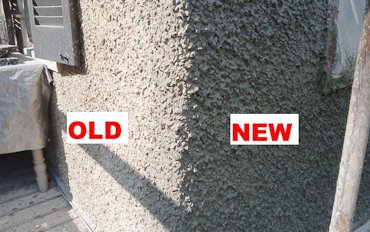
We left the old stucco under the porch. It hadn't weathered like rest.
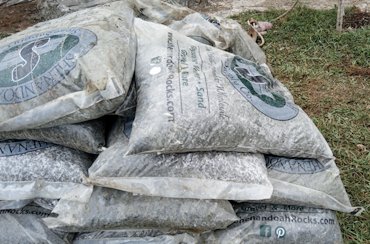
I found some number 8 bluestone in bags. Gravel measured in bags is a great
labor saver.
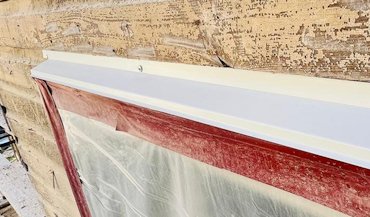
We put flashing over the windows, pitched down for water run off.
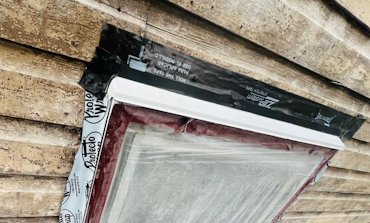
The sides of the windows were sealed with peel and stick rubber tape, as well as the top flange of the flashing. This will never leak.
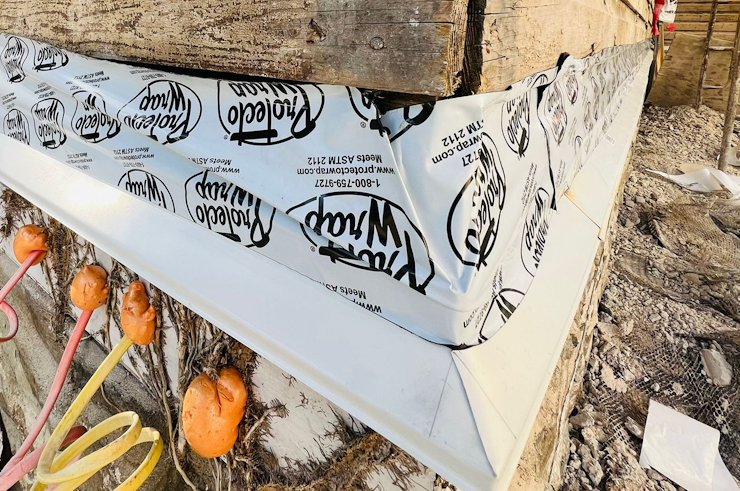
The drip moulding at the bottom never had flashing and was in good shape for 149 years old.
We flashed the drip moulding with what else: drip moulding flashing.
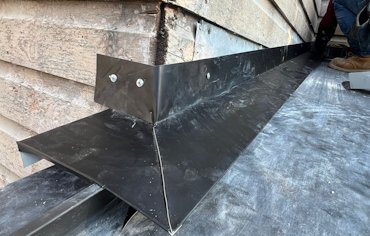
We made the flashing for the metal roof with a metal brake.
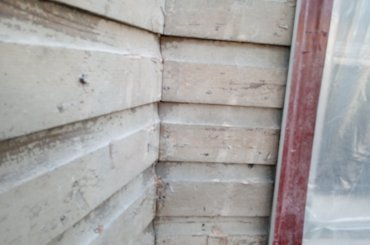
A view of the incredible workmanship on the wood clapboard siding. Miters were coped with a coping saw
and still are tight after 149 years.
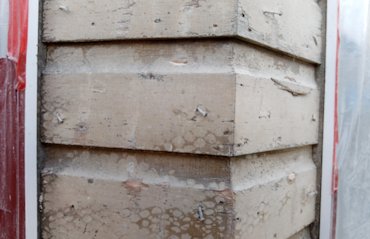
Miters on the outside corners are tight. Siding fits tight to the windows. Not bad for no power
tools.
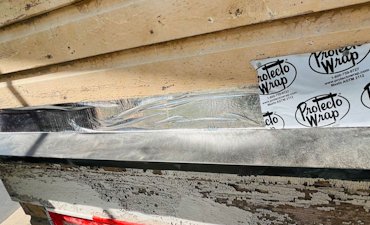
Old rusty 1875 flashing was replaced with black aluminum. So many new houses don't have flashing at all, or is put on backwards.
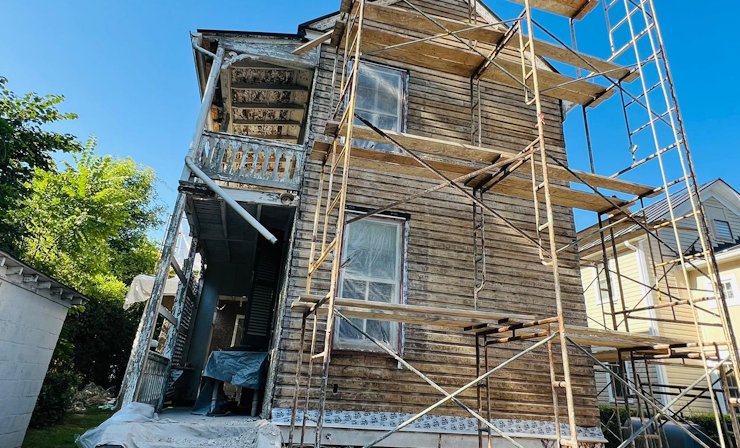
There was no wood rot on the whole house, except for one window sill. I think it was damaged in a storm window installation in the 50's or 60's. Also notice there was no tarpaper, tyvek or any vapor barrier. I have found through experience that stucco put on 3/4" or more rarely has rot. Houses with a stucco thickness of 1/2" or less seem to always have problems.

Chimney was in terrible shape, and wiggly.
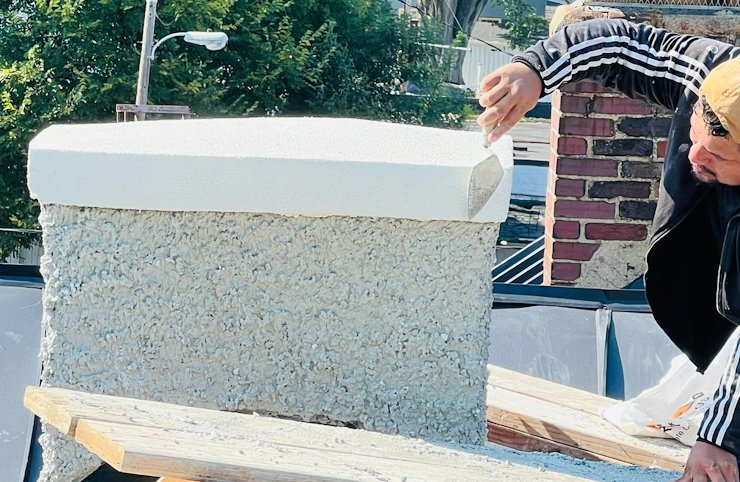
Chimney was stiffened up using our super mortar. The crown was done with a float finish for better water run off than rough pebble dash. The white looks nice and is less porous.
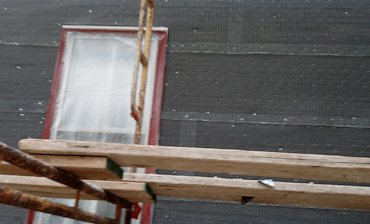
Of course we put on tarpaper and self furring lath.
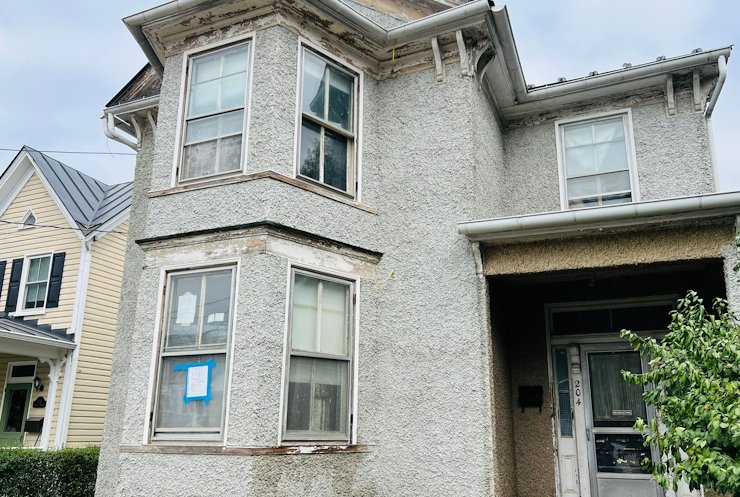
Finished front looks dramatic.
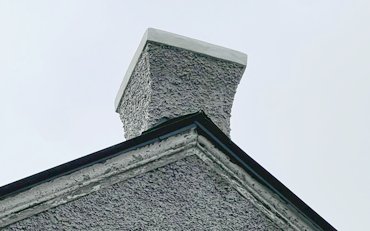
Sculptured chimney around back.
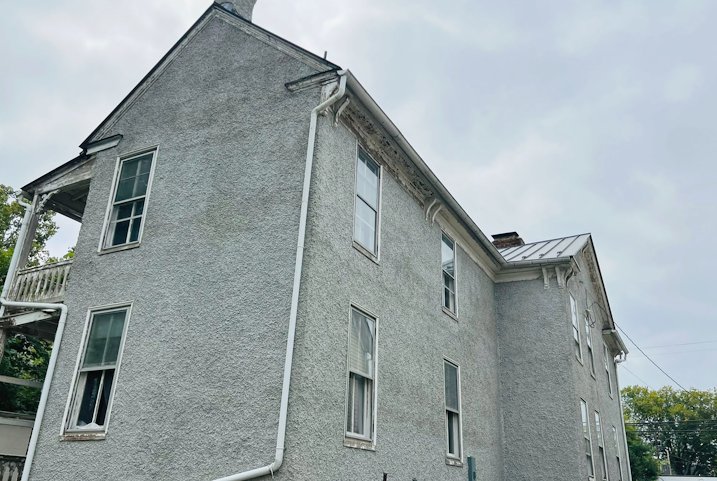
Pebble dash adds a very solid, fortress like look.
How did I figure out the stucco was probably done in the 1920's ? Diamond mesh lath with smaller diamonds
came out about 1915. Before, diamond mesh lath had a larger mesh size. The oldest building I have seen with diamond mesh lath was built in 1908. The old stucco here was lime and sand. By 1930, almost all stucco was portland cement.
The wood clapboard siding was probably made in a steam powered sawmill.I heard there was a steam powered sawmill in Warrenton after about 1860, but I don't have documentation that this was true, only hearsay. There were several water powered mills in the Leesburg area, but to make such a smooth cut in a hard wood, probably required steam. For more info on the history of materials, please check out my chapter, History of materials, by simply clicking this link.















